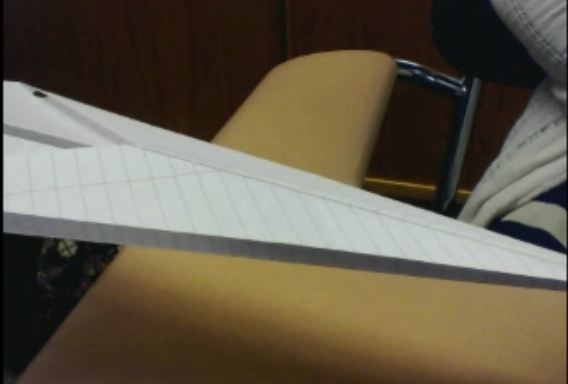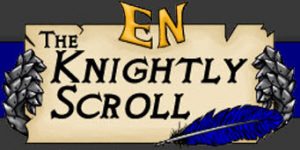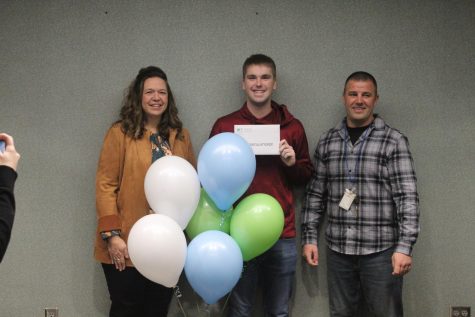It’s a Bird! It’s a Plane!…Made of Paper?

Think to yourself; do you really know how to make the best paper airplane? We’ve all been in the situation where we whipped up a fun and easy paper airplane, but how many times had that plane flown three feet then took a nose dive, or curved around in a circle? If you’re like me and have a love for airplanes, then this is the story for you!
First off, we must have an understanding of how objects fly and what causes them to do so. A wing of a bird, plane, space shuttle, etc. all have the same components to create the effect of lift and flight. The wing is shaped to have a curved top and a flat bottom so when it is cutting through the air, the molecules going over the curved part have a greater distance to travel than the molecules going across the flat part of the wing. This results in the air molecules going across the curved part of the wing to go faster, mainly due to when the molecules split and go faster there are gaps in between the molecules creating a high pressure and the outcome is lift. Jets and propellers are simply there to make the plane go fast enough that it cuts the air creating the flight.
Now that we have background knowledge on how flight works, we can begin our learning process of different varieties of paper airplanes. According to television star and scientist David Rees, there are several types of planes that are easy and fun to create. There are planes known as the Tube, which is an object made out of four folds that flies and gains speed based on how much you spin you have during the release. Another plane is known as the Tumbling Wing which uses a thin strip of paper. Follow this plane with a piece of cardboard holding it almost completely vertical; the cardboard pushes air off of it and allows the plane to keep spinning. The next plane on our list is the Boomerang, which is a plane of twenty-three folds and acts just as a boomerang; it should come just right back. Finally, there is the world-record holding paper airplane for the longest air flight and distance which is known as the Suzanne.
Now, paper airplanes aren’t limited to the ones listed above. Those are merely examples of unique and different planes. To even begin affective flight, we need to learn some tips. First, make sure your folds are precise and crisp, if need be then use a tool to help your folds such as a bone folder. Once you have your paper airplane made, decide if you want your plane to be flown for duration or distance. If you want your plane to be flown for distance, launch it with a zero degree angle of attack. When flying for duration, try to launch your plane with a fifteen degree angle of attack. Always remember, you always want to throw into the wind because more wind creates more energy. Have fun with your new and improved paper airplane.






